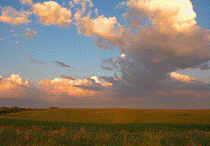
Proceedings of the North American Prairie Conferences
Date of this Version
2004
Document Type
Article
Abstract
The oak savanna in the Midwest was maintained historically in part by fire, topography, climate, and other factors. After agriculture, which left only large fencerow trees, park management of fire, mowing and other minor factors to restore clusters of oaks has proceeded at different frequencies at different sites since the 1960s. I asked how different management frequencies created a range of spatial patterns and composition in the canopy. I compared three 0.37-ha sites that were unmanaged, or managed with more or less frequency by spatially mapping all woody species to the nearest 25 m2 The oak trees, dominated by bur oak species (Quercus macrocarpa Michx.) had the desired clumped distribution in the managed sites, as opposed to a random distribution and a lower oak density without management. In addition, the dominant canopy species shifted from bur oak in managed sites to shade-tolerant black cherry (Prunus seratioo Ehrh.) and box elder (Acer negundo L.) under closed canopy and shagbark hickory (Carya ovata (P.Mill.) K. Koch). However, habitat heterogeneity did not decrease with management intensity, as predicted. The less managed site had more spatial heterogeneity than the more managed or unmanaged sites. All sites had woody understory thickets, however, the location and number of patches depended on management. This study shows how spatial dynamics in the canopy is influenced by management frequency.


Comments
Published in Dave Egan & John A. Harrington, editors, Proceedings of the 19th North American Prairie Conference: The Conservation Legacy Lives On..., University of Wisconsin-Madison, August 8-12, 2004 (Proceedings of the North American Prairie Conference, 19), Madison, WI: University of Wisconsin-Madison, 2004.